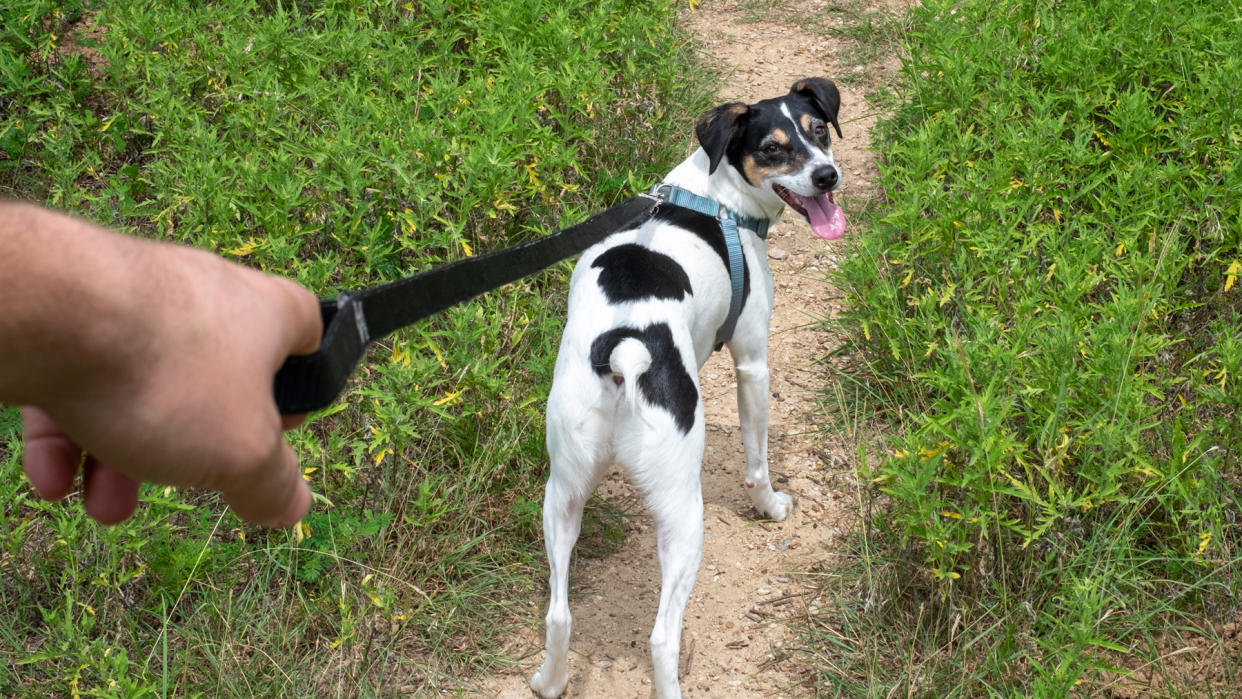Sick of your dog pulling on the leash? Use this trainer’s advice for a smoother walking experience

Good leash walking skills are essential for a harmonious, stress-free walking experience with your furry friend. Whether you have a rambunctious puppy and just learning the ropes of how to train a puppy to walk on a leash or an adult dog with persistent pulling habits, it's never too late to start training them to walk politely on a leash.
Thankfully, with patience, a pocketful of the best dog treats and some trainer approved guidance on proper leash walking you can nip this issue in the bud. Enter, Jennifer Worswick, the owner and head trainer of Top Paw K9 Academy, who has shared some valuable insights on how to teach a dog who pulls on a leash to 'heel', providing dog owners with effective techniques for achieving smoother walks.
Teaching your dog to 'heel' is a highly beneficial skill to develop. The 'heel' command encourages your dog to walk calmly by your side, focusing their attention on you and maintaining a controlled pace. By mastering this command, you gain better control over your dog's movements, preventing them from pulling, lunging, or becoming overly excited during walks.
You can watch Worswick teaching 'heel' below where she works with Winnie, a dog with a bad habit of pulling. With her certification in pet psychology and being Pet Animal Care and Facilities Act (PACFA) and State Licensed, Worswick is a trusted source of guidance.
The trainer's approach begins with using a slip leash and unhooking the leash from the dog's harness, giving her more control over the dog's head. By gently guiding the dog's head, she encourages them to follow her lead.
When the dog starts pulling or ignoring her, Worswick remains patient and waits for the dog to turn around. This moment of engagement is then rewarded, reinforcing the idea that she is more interesting and rewarding than anything else in the environment. Take your time with this, moving too fast is one of the most common loosh lease walking mistakes made by owners.
During the training process, Worswick incorporates positive reinforcement by saying "yes" and giving treats whenever the dog exhibits desired behaviors, such as walking next to her. By turning around whenever the dog tries to go forward and rewarding them for keeping their attention on her, she reinforces the concept of walking beside her.
Through consistent practice and engagement, the dog begins to pick up on the 'heel' command, gradually improving their leash manners and staying more engaged with their owner.
With patience, consistency, and positive reinforcement, it's possible to build better leash walking skills and establish a stronger connection with your four-legged companion. If you feel like your four-legged friend needs further help with their leash walking behavior, you can always consult a professional trainer or behaviorist and receive some 1:1 assistance.